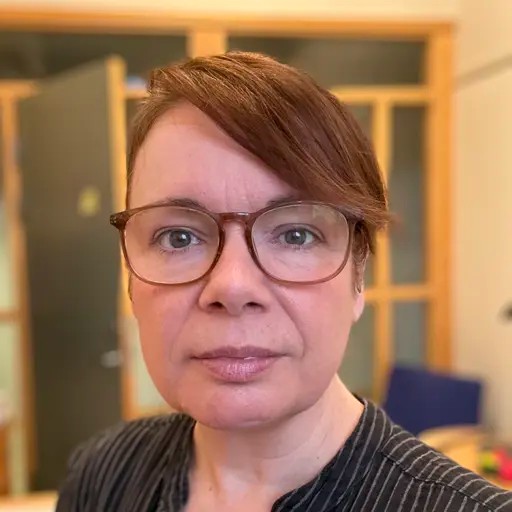


"This recognition will embolden me to continue with my research endeavors and support society through my research," says Md Anamul Hoque, who along with Md Agin Vyas received this year's PhD prizes from VINNOVA Competence Centre 2D-TECH and Graphene Centre at Chalmers earlier this week.
On March 13, it was time for 2D-TECH and Graphene Centre at Chalmers to present their annual PhD prizes. On site at the Kollektor to receive the awards were awardees Md Agin Vyas, former PhD student at EMSL, and Md Anamul Hoque, former PhD student at the Division of Quantum Component Physics. And the two prizewinners were quite pleased and proud as they received their diplomas along with a prize sum of SEK 15,000 from Samuel Lara Avila, senior researcher at QDP, on Monday afternoon.
“I was thrilled to hear the announcement of getting the 2D-TECH - PhD Award 2023. I am truly honored and grateful to have received this amazing recognition for my efforts. It could not be better than this! This recognition will embolden me to continue with my research endeavors and support society through my research. I must mention that I couldn't have achieved it without the help and guidance from my supervisor, Prof. Saroj Prasad Dash,” says Anamul Hoque, who was awarded for his PhD thesis titled ”Charge-Spin Conversion and Electronic Transport in Two-Dimensional Materials and van der Waals Heterostructures.”
And Agin Vyas, who received the award from Graphene Centre at Chalmers for his PhD thesis “On-chip electrochemical capacitors and piezoelectric energy harvesters for self-powering sensor nodes”, took the opportunity to highlight the collective efforts of the entire research group over the years.
“As a PhD student, I was always concerned about the impact of my work. This award suggests that the methods I demonstrated in the PhD are worth improving in the context of Graphene based device manufacturing and subsequent production. I am glad that my thesis can highlight the challenges that we face in fabricating devices from such novel materials. This award is not just my achievement, but a fruit of continuous efforts in miniaturization of supercapacitors on the part of our entire Micro and Nanosystems group,” says Agin Vyas.
Micro supercapacitors and two-dimensional semiconductors
The award ceremony took place during a webinar in which the awardees held lectures on their theses and research results. During his PhD, Agin have developed a method that represents a breakthrough in how supercapacitors can be produced. And he now receives the award with the motivation: “For his efforts towards miniaturization of supercapacitors using graphene-related compounds, for future self-powered electronic devices”.
”My thesis is about on-chip integration of energy harvesting and energy storage devices for self-powering sensor nodes. I focused my attention towards vibrational energy harvesters that generated energy from the environment through piezoelectric material and developed several designs while collaborating with the Mechanical Engineering group and RiSE Smart Hardware. In the energy storage section of my thesis, I discuss the state-of-the-art in micro supercapacitors and describe the efficacy of our methodology in fabricating such devices while using graphene-based compounds that were recently invented/developed at Chalmers in the Prof. Ergang Wang's group. In the final chapter, I have discussed several strategies to integrate the harvester and storage using complementary metal oxide semiconductor (CMOS) technology.”
During his PhD, Anamul Hoque has explored charge and magnetic properties in two-dimensional materials as well as their van der Waals heterostructures for compact and energy-efficient memory and logic devices. He is awarded 2D-TECH's PhD prize with the motivation: “For his investigations on two-dimensional semiconductors, opening prospects for high-performance and energy-efficiency logic and memory technologies”.
“In the near future, new applications associated with healthcare, agriculture and manufacturing industries will greatly depend on artificial intelligence (AI), 5G communication, Internet of Things (IoT). These forthcoming technologies will dramatically increase the need for efficient computation and memory technology with gigantic data storage facilities, like the Facebook data center in Luleå. In modern computer technology, the memory units and central processing unit (CPU) are separated, which constrains its efficiency. In this regard, the integration of memory and logic functionalities together like the human brain can increase the efficiency of future computation and data storage techniques. Conventional materials(silicon)-based current computation device is unsuitable to integrate logic and memory functionality in compact device design. In this thesis, I investigated the magnetic and charge transport in the newly developed two-dimensional (2D) materials for future memory and logic technologies. These newly developed 2D materials such as graphene, semiconductors, and semimetals exhibit remarkable new properties that promise to integrate non-volatile memory and logic functionalities with lower energy consumption,” says Anamul.
Where are they now?
After his PhD, Anamul has carried on down the path of two-dimensional materials and is now doing his postdoc at MC2.
“My current project aims to exploit the electronic transport properties in nanodevices of two-dimensional materials such as graphene, semiconductors, and their heterostructure for electronic, spintronic, optoelectronic and quantum device applications. The experimental research will consist of the growth of two-dimensional material heterostructures, nanoscale device fabrication and measurements,” he says.
Agin has since his PhD defense left Gothenburg and the academy and is now working as a process engineer within Deep Reactive Ion Etching at Silex Microsystems, world leading in pure-play MEMS foundry.
“It is quite exciting to be a part of a pure-play MEMS foundry where I can work with state-of-the-art products while executing challenging processes and keeping up with timelines. To me, it feels like an ideal continuation of my education in the field of semiconductors and microelectronics,” says Agin.

- Associate Professor, Quantum Device Physics, Microtechnology and Nanoscience

- Director Industrial Relations, MC2 Operations Support, Microtechnology and Nanoscience